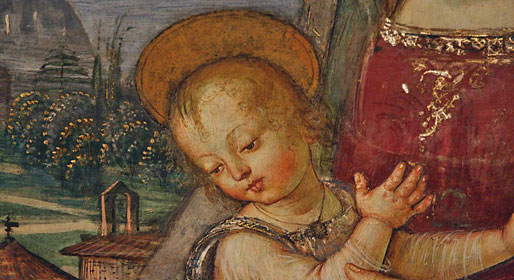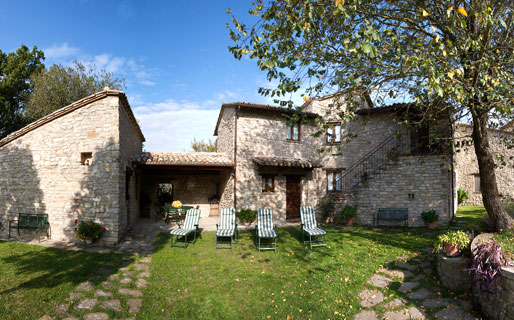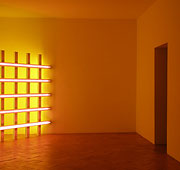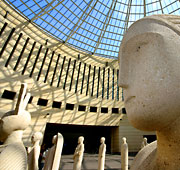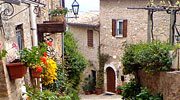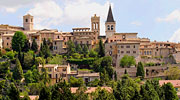Umbria's Renaissance
A journey from Spoleto to Perugia, admiring some of the 16th century's greatest works of art.
A region of Italy which boasts more than its fair share of masterpieces, Umbria owes much of its staggering artistic heritage to the Renaissance and the cultural revolution it provoked.
Spoleto specials
We get to take our first glance at the jewels with which Umbria's immense artistic treasure chest is filled, in Spoleto and, more precisely, in the city's cathedral.
Although the edifice, initiated in the 13th century, is predominantly Romanesque, its majestic portico is the result of alterations made during the Renaissance period.
Complex of the Duomo di Spoleto + Audio Guide
Dive into the ancient history of Spoleto and climb a 10th-century bell tower.
Get your tickets now!
Inside, a cycle of frescoes by Filippo Lippi and a Madonna and Saints by Pinturicchio can be seen. Spoleto boasts a great number of houses of worship, the most important of which being the Romanesque Church of San Nicolò, the Church of Sant'Eufemia, the Church of Santi Giovanni and Paolo, and the Church of San Gregorio Maggiore.
A visit to Spoleto's Art Museum is an absolute must, if only to admire the magnificent Mary Magdalene attributed to Guercino
Art and wine in Montefalco
As we head towards Perugia, we make an albeit obligatory stop at Montefalco, where the Sagrantino, one of Umbria's most highly acclaimed red wines, is produced.
Also known as the balcony of Umbria for its panoramic position dominating the valley, Montefalco is home not only to inviting wineries but also to an important museum, this latter housed within the walls of the old Church of San Francesco.
The museum is comprised of three sections, the first situated within the old church where, between 1450 and 1452, Benozzo Gozzoli depicted his Life of St Francis. This is also where to see Perugino's splendid Nativity.
Moving on to the Pinacoteca, we find paintings from the Umbrian School dating from the 14th to 18th centuries. Finally, in the crypt, there is a fascinating collection of sculptures and archaeological exhibits.
Umbria's art capital
Once in Perugia, we start our tour of the region's capital with a visit to the National Gallery of Umbria, in Palazzo dei Priori.
The National Gallery of Umbria contains an incredible number of Italian artworks, dating from the 13th to 18th centuries, including works by Piero della Francesca, Pinturicchio, Beato Angelico, Benozzo Gozzoli and, naturally, Pietro Vannucci, alias Perugino
The position of the museum is a strategic one: just a few meters from Piazza IV Novembre and its celebrated fountain, the Pozzo Etrusco, the Cathedral, and the Collegio del Cambio. This latter, the city's ancient currency exchange, contains a stunning pictorial cycle by Perugino.
Not far away, lies the charming little Church of San Severo in which to see a fresco of the Trinity and Saints, half of which painted by Raphael, half by Perugino.

